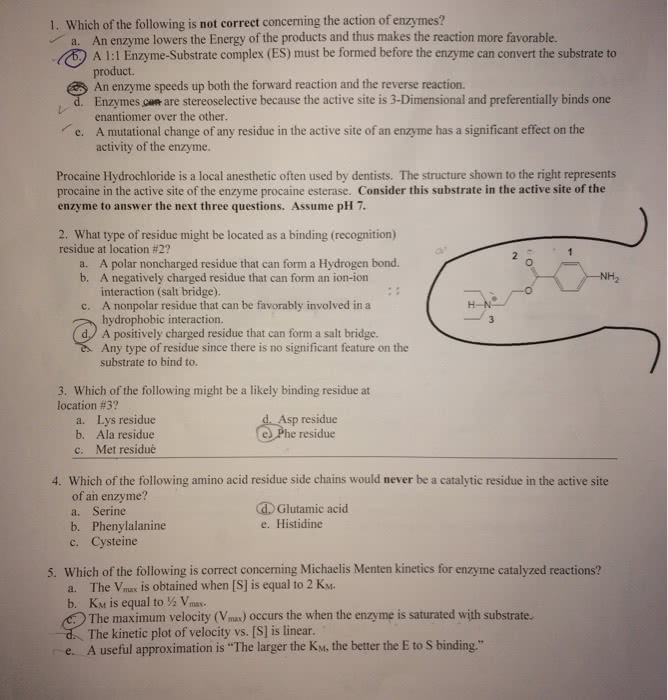KNES 464 Lecture Notes - Lecture 9: Non-Competitive Inhibition, Enzyme Kinetics, Enzyme

Lecture 9
V max- on y axis
- Relationship between substrate and rate of reaction
- Plateaus at V max
- Km (units of substrate concentration)
o Substrate concentration at which the ½ V max occurs
Enzyme kinetics
- Sensitivity
- If Km were to steep lower, then line would be steeper
o Small change in substrate concentration results in a larger velocity change at any
given concentration
o The steeper the line, the more sensitive—a small change on x axis would give a
bigger change in y axis
Enzymes and Inhibitors
- If you have WAYYYY more enzymes than substrate, then none of the following would
happen
- If change enzyme concentration (add more), then V max is increased, but no change in
km
o Km is a property of the enzyme—the km relates to the enzyme, but can increase
V max
- Competitive Inhibitor
o Looks very close to the substrate
o Will go into binding site of the enzyme and block the way for the substrate
(physical barrier)
o Can add so much substrate and kick the inhibitor out
▪ Will affect the km because it will take longer to get to the V max, because
▪ Raise km, because less sensitive
- Noncompetitive Inhibitor
o Will change the enzyme- sometimes it makes it so that the substrate can’t bind
or sometimes it makes it so that the substrate binds, but cannot undergo the
activity of the enzyme
o Binds far from the binding site- do not bind at binding site
o Therefore, V max is affected (lower because less place for them to go)
▪ If have noncompetitive inhibitor, it will be on that enzyme no matter how
much enzyme
▪ Substrate cannot outcompete the enzyme becayse it is not there
▪ Km does not change
o Sensitivity is the same but V max is lower
V max
Km
More Enzyme
Increase
No change
Competitive Inhibitor
No change
higher
Document Summary
Relationship between substrate and rate of reaction. Km (units of substrate concentration: substrate concentration at which the v max occurs. If you have wayyyy more enzymes than substrate, then none of the following would happen. If change enzyme concentration (add more), then v max is increased, but no change in km: km is a property of the enzyme the km relates to the enzyme, but can increase. If have noncompetitive inhibitor, it will be on that enzyme no matter how much enzyme: substrate cannot outcompete the enzyme becayse it is not there, km does not change, sensitivity is the same but v max is lower. Amount of energy required or released required by the reaction is a function of how far it is from equilibrium. At equilibrium- gibbs free energy is 0: no net movement. Mass action ratio: ratio of concentration of product over the concentration(s) of reactant(s, r= [b]/[a, atp adp + pi, r= [adp] x [pi]/ [atp]


